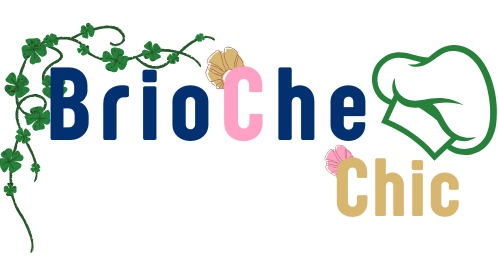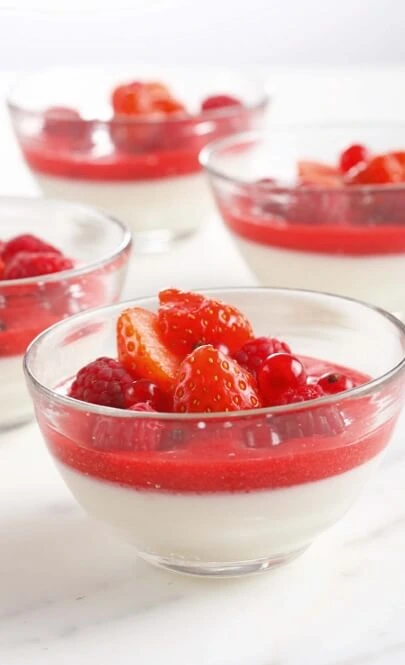how to make yogurt
It holds a special place in both everyday diets and gourmet cuisine around the world.
This creamy, tangy delight comes from the natural fermentation of milk by beneficial bacteria.
The two main strains used are Lactobacillus bulgaricus and Streptococcus thermophilus.
These microorganisms convert lactose, the natural sugar in milk, into lactic acid.
The acid thickens the milk and gives yogurt its tangy flavor and velvety texture.
Historically, yogurt is believed to have been discovered thousands of years ago.
It likely happened by accident when milk stored in warm conditions began to ferment naturally.
Since then, yogurt has become a global staple.
It is deeply rooted in the culinary traditions of regions like the Middle East, the Mediterranean, and the Indian subcontinent.
Link to your fruit coulis recipe
📝 Use in context like:
“Top your yogurt with this easy homemade fruit coulis for a refreshing finish.
For 6 People
Preparation Time:
Approximately 15 minutes of active preparation is required. This time includes gathering and measuring ingredients, preparing any necessary components, and setting up your workstation to ensure a smooth cooking process.
Cooking Time:
The cooking or baking process takes between 6 to 8 minutes. This relatively short duration ensures that your dish is cooked perfectly—whether you’re baking, simmering, or heating—without overcooking or losing texture and flavor.
Storage:
Once prepared, the dish can be stored safely in the refrigerator for up to 48 hours. To maintain optimal freshness and quality, cover your dish tightly with plastic wrap or use airtight containers. Before serving leftovers, allow them to come to room temperature or gently reheat as needed, depending on the recipe.
Equipment Needed
- Thermometer:
A cooking thermometer is essential for precise temperature control, ensuring your dish reaches the ideal cooking temperature for safety and texture without overcooking. - Fine Mesh Strainer (Passette):
Use a fine mesh strainer to sift, drain, or strain ingredients, providing a smooth and refined texture by removing lumps or excess liquid. - 6 Transparent Glasses or Small Bowls:
Serving your dish in six individual clear verrines or small glass bowls enhances presentation by showcasing the layers, colors, or textures of your preparation. Choose glasses that hold an appropriate serving size and are heat resistant if reheating is necessary.
Ingredients
- 250 grams of heavy cream (crème fleurette) with 35% fat content
This high-quality liquid cream is prized for its rich texture and excellent whipping properties. - The 35% fat content ensures a luxurious mouthfeel and stability. making it ideal for creating smooth, airy preparations like mousses, whipped toppings, or delicate creams. Using fresh, cold cream will help achieve the best consistency and flavor in your dish.
- 20 grams of sugar
A moderate amount of sugar is added to balance the natural tartness of the citrus and to enhance the overall flavor profile. - The sugar also contributes to the cream’s structure when whipped, providing slight sweetness without overpowering the freshness of the other ingredients.
- 3 grams of lime zest
The zest, or finely grated outer peel, of fresh limes brings a burst of bright, aromatic citrus oils that elevate the dish with lively fragrance and subtle bitterness. Lime zest adds complexity and depth to the cream, complementing its richness with a fresh, zesty note. It’s important to use only the green part of the peel, avoiding the white pith which can be bitter. - 20 grams of fresh lime juice
The juice from freshly squeezed limes introduces a clean. tangy acidity that cuts through the richness of the cream, balancing flavors beautifully. The lime juice imparts a vibrant citrus tang that enlivens the palate and enhances the overall freshness of the preparation. Using freshly squeezed juice, rather than bottled, ensures the brightest and most natural flavor.
Preparation Instructions
- Heat the cream mixture:
Pour the heavy cream into a saucepan and add the sugar along with the finely grated lime zest. Slowly heat this mixture over medium-low heat, stirring gently, until it reaches 80°C (176°F). - Heating at this precise temperature allows the sugar to dissolve fully and helps infuse the cream with the aromatic oils released from the zest without curdling or boiling the cream.
- Strain the mixture:
Once the cream mixture reaches 80°C, immediately remove it from the heat. Pour it through a fine mesh strainer (passette) into a clean bowl or container to remove the lime zest bits. This ensures a smooth, silky texture without any coarse bits of zest, resulting in a refined final product. - Add the lime juice:
While the cream mixture is still warm, add the freshly squeezed lime juice directly into the strained cream. Use a silicone spatula (maryse) to gently fold the juice in, combining the flavors thoroughly without incorporating too much air. The acidity from the lime juice will balance the richness of the cream and intensify the citrus notes. - Pour into serving vessels:
Immediately transfer the mixture into individual verrines, small glasses, or any other containers you prefer for serving or chilling. Pouring while the mixture is still warm helps it settle evenly and avoid lumps. - Chill and set:
Place the containers in the refrigerator and allow the mixture to cool completely and set. This chilling step usually takes several hours or overnight. The cream will thicken and develop a luscious texture as it cools. - Serve with garnish:
Once fully set, enhance your dish by adding a coulis (fruit sauce) or a selection of fresh fruits on top. - The vibrant flavors and textures of the garnish will complement the creamy citrus base, creating a balanced and elegant dessert or appetizer.
Conclusion
This delicate lime-infused cream is a perfect example of how simple ingredients, when handled with care and attention to detail, can transform into an elegant and refreshing dish.
This delicate lime-infused cream is a perfect example of how simple ingredients can shine.
When handled with care and precision, they transform into an elegant and refreshing dish.
The balance between rich, velvety cream and the bright tang of lime zest and juice is remarkable.
It creates a harmonious flavor profile that delights the palate without overwhelming it.
Whether served as a light dessert, a sophisticated appetizer, or part of a larger dish,
this recipe showcases the beauty of French-inspired techniques with a modern twist.
Success depends on temperature and timing.
Heat the cream just enough to dissolve the sugar and release the citrus aroma.
Then add the lime juice carefully to preserve the smooth, creamy texture.
Once chilled, the mixture sets into a refreshing, spoonable delight.
It’s perfect for warm days or elegant occasions.
A coulis or fresh fruit on top adds vibrant color and contrast in flavor and texture.
It turns each portion into a visually stunning and delicious treat.
This recipe also welcomes creativity.
Try swapping citrus or adding herbs like mint or basil for a personal, seasonal touch.
In the end, this lime cream embodies the elegance of simplicity.
It proves that with good ingredients and thoughtful preparation, a humble dish becomes unforgettable.
On yogurt fermentation & health benefits
Link to a scientific or health site like Healthline’s article on yogurt benefits
Use in context like:
“According to Healthline, yogurt is rich in probiotics that support gut health and digestion.
Questions & Answers
Q: Can I use lemon instead of lime in this recipe?
A: Absolutely! Lemon zest and juice will provide a slightly different citrus flavor—more tart and bright—
while still complementing the cream beautifully. Adjust the quantity to taste since lemons can be more acidic.
Q: What if I don’t have a thermometer? How can I tell when the cream is ready?
A: If you don’t have a kitchen thermometer, heat the cream gently until you see tiny bubbles forming around the edges (just before boiling).
Stir frequently to prevent scorching, and don’t let it come to a full boil.
Q: Can I prepare this in advance? How long will it keep?
A: Yes, you can prepare it a day ahead. Store the cream covered in the refrigerator, and consume within 48 hours for best freshness and texture.
Q: How can I make this recipe dairy-free?
A: Use a full-fat coconut cream or other plant-based cream alternatives with similar fat content. Keep in mind that the flavor and texture may vary slightly, but it can still produce a delicious result.
Q: What coulis or fruits pair best with this lime cream?
A: Raspberry, mango, passion fruit, or strawberry coulis work wonderfully. Fresh berries, kiwi slices, or even pomegranate seeds add vibrant colors and refreshing contrasts.

